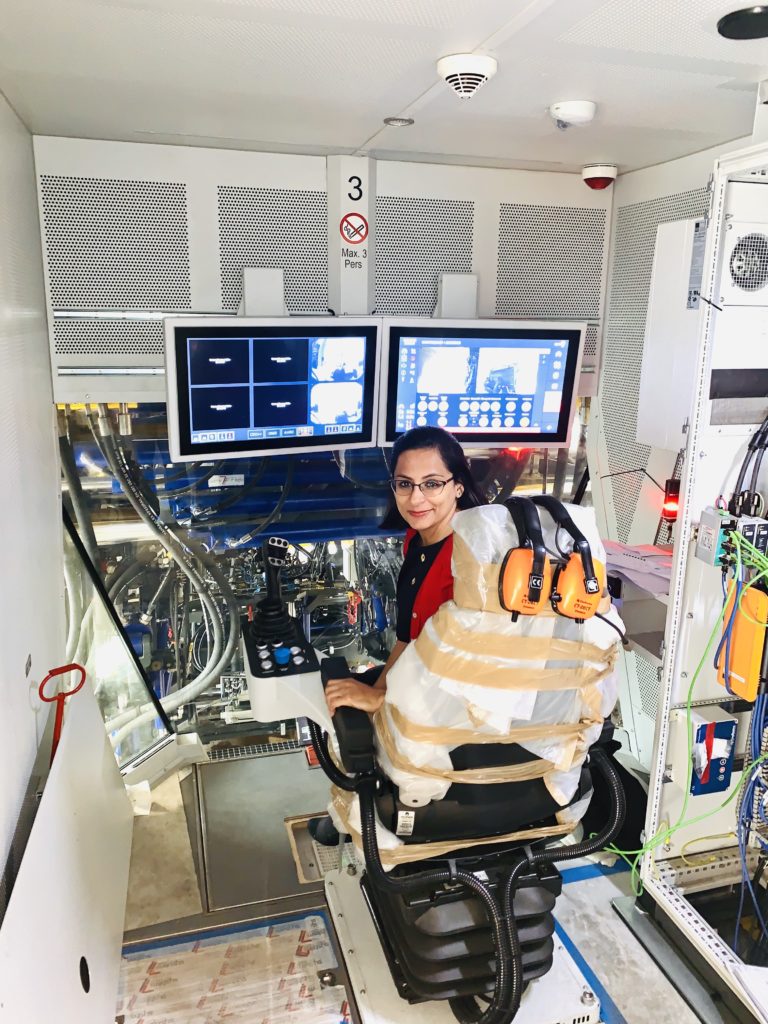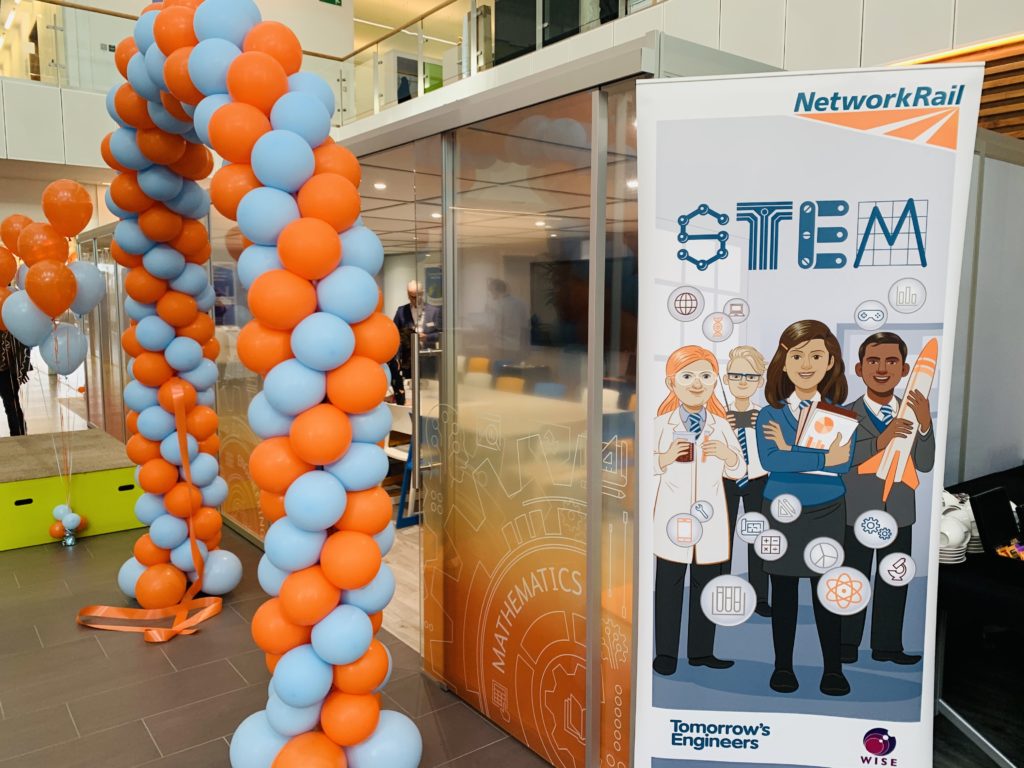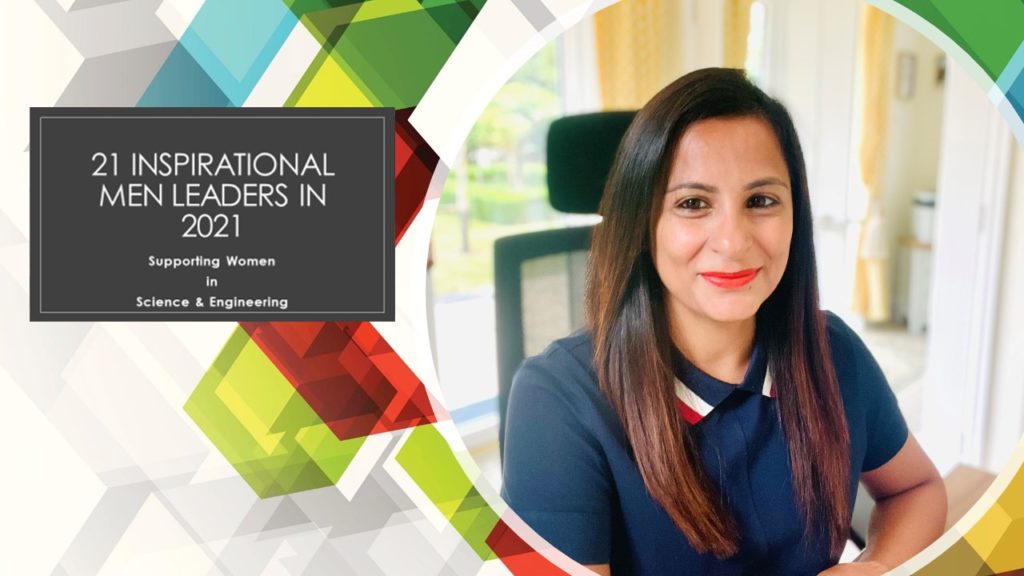There is an increased focus today on equality, diversity, and inclusivity (EDI) for employers, employees, and prospective employees. Organisations that actively engage in EDI values are able to attract and retain individuals from diverse groups and, through greater inclusion, they can recruit the very best talent.
However, we should not embrace diversity just because it delivers a better business outcome. EDI is fundamentally right and fair. If done properly, EDI should also be more than a token ‘box ticking’ exercise.
Best practice
To talk about EDI best practice, Rail Engineer recently met Sana Wajid CEng MICE FPWI CMngr CMI who is a principal engineer (Southern region) at Network Rail. Throughout last year, Sana produced a series of YouTube interviews called ‘21 Inspirational Men leaders 2021 supporting Women in Science and Engineering’.
The interviews featured senior male leaders in Network Rail who Sana identified had inspiring personalities and exemplary leadership skills, and a good understanding of the requirements of EDI and diversity (gender, racial, disability, and sexuality). She put questions to the leaders to explore the understanding of the barriers women face and how the company is looking at ways to understand the root causes, together with some great initiatives to improve gender diversity.

For all good employers to achieve business success they need to recruit good people with diverse backgrounds, experience, and talents. They need to make every effort to ensure their people practices and company polices reflect the true value of every individual, and to continually foster an open, equal, diverse, and inclusive workplace. Not only is this good business practice and the right thing to do, but the Equality Act 2010, requires employers to: eliminate unlawful discrimination, harassment and victimisation; promote equality of opportunity between people who share a ‘protected characteristic’ (such as age, disability or race) and those who do not; and foster good relations between people who share a protected characteristic.
Building an organisation or business, where everyone’s contribution is valued and where they believe they belong and can feel comfortable and flourish, enables the establishment of a more innovative and creative workforce.
What is EDI?
Equality means employees having the right not to be discriminated against because of who they are or what makes them different from other people, and every individual must have an equal opportunity to make the most of their lives and talents.
Diversity means having a have a mix of people, with each person bringing their unique set of skills, talent and experiences to help the employer achieve greatness in all they do. Good diversity is including or involving people from a range of different social and ethnic backgrounds and of different genders and sexual orientations.
Inclusion means employees having a sense of belonging and the ability to contribute to everything, as well as being appreciated for the uniqueness of what they bring to enhance the performance of the organisation. An inclusive organisation is one where behaviours are encouraged to enable inclusion and one where any behaviours that undermine inclusion are reduced.
A good organisation should create a climate where EDI is welcomed and valued, and where all employees’ knowledge and expertise is valued and used. Many companies focus their initial work on women and Black, Asian and Minority Ethnic (BAME) employees as they are consistently under represented at senior levels. But it is also important to support EDI across all characteristics.
Highly motivated
With a Bachelor of Engineering, Civil Engineering from the NED University of Engineering and Technology in Karachi, Pakistan, Sana moved to the UK to obtain her Master of Philosophy (MPhil), Structural Engineering from the University of Warwick. She gained her CEng in May 2019, via the Institution of Civil Engineering, and has been awarded Diplomas in Management, and Business Administration and Management from the Chartered Management Institute.
Sana is a Fellow of The Permanent Way Institution. She manages a team of track bed design engineers and, among many other responsibilities, is a continuous improvement champion leading a number of improvements for the Network Rail design delivery track bed team. The team provides improved and optimised track bed design, and bespoke track form design solutions for difficult sites via advanced track geometry analysis. The team also provides a unique service for routes using desktop study data to identify the required track bed treatments.

It was soon clear from our conversation that Sana is highly motivated and technically proficient, with excellent interpersonal skills and the ability to communicate at all levels, and she is passionate to motivate everyone to improve EDI. She wants to be responsible for creating an environment where people can feel safe to contribute different ideas, or challenge the way things are done, and she wants to develop and enhance the necessary behaviours to help, in particular women and BAME engineers, to build a better railway and society for tomorrow.
Amazing leadership
After leaving Warwick as a qualified structural engineer, Sana initially joined an American company based in the UK. This was a challenge as she was the only female engineer leading the development of a structural portal system for the timber frame industry. This was successfully patented and Sana took the system from its early development through to being marketed as a commercial product.
Not wanting to become a one subject expert, in 2012 Sana was attracted to Network Rail for its engineering diversity and she knew it was a good company to work for. She has not been disappointed and is very appreciative of the “amazing” senior leaders in rail who have been very helpful and pushed, challenged, and inspired her to do the very best in her career, and to make a difference. This is not just people within Network Rail, as for example she told me she has also met a number of great inspirational leaders in both the DfT and ORR.
Since joining Network Rail Sana has gained engineering experience and promotion as: structures design engineer; senior engineer (buildings); senior engineer (track and lineside); and in her previous role was a design team manager for track bed investigation team – involving both plain line, and switches and crossings. Sana has also been involved with track geometry and gauging disciplines, where she also led some of the incident investigations and represented Network Rail for witness statements in court trials.
EDI initiatives
In wanting to continually look for new EDI initiatives, Sana tries to do something different each year. She initiated a ‘bring your child to work’ scheme which was very successful and oversubscribed, and which has been adopted nationally.
Network Rail has a target of achieving 50% female employees by the end of 2024, but Sana has already exceeded this in her team with 70% female engineers. She has worked hard in finding new ways of working during the Covid-19 pandemic, such as adopting very flexible working hours. Change is never easy, she acknowledges, but she wants to introduce change and new ways of working to make a better railway for everyone.

Network Rail has a scheme which provides managers with up to five ‘volunteer’ days a year, which Sana and many other engineers use to go into schools to assist young people with their STEM (Science, Technology, Engineering, and Mathematics) studies. She participates in STEM for both primary and secondary schools up to A level standard. Her participation in STEM varies every year including a programme called Intro2Rail last year, which is a new competition designed to connect young students with opportunities in the rail sector through hands-on projects and engagement with industry volunteers.
Inspirational
Sana explained that STEM activities are great way to inspire young people into engineering and to address any concerns they may have, and to explain to the next generation of engineers that Network Rail is not just men on the track in orange clothes.
Sana has also instigated a programme of ‘listening’ exercises to identify how young BAME engineers feel regarding inclusivity and what needs to be done to overcome the barriers. Good progress is being made in some parts of rail with diversity, but more needs to be done. Her advice to young BAME and women engineers is to always believe in yourself, and do not let anyone tell you what you can do and cannot not do as a career. If you are different then that is a positive, as you can contribute different ideas to an organisation like Network Rail. You must also take criticism positively. This can be difficult and not easy, but it is an important skill.
To support Women in Engineering 2021, Sana instigated ‘21 Inspirational Men leaders supporting Women in Science and Engineering’, in which she questioned 20 rail leaders, plus her own father. The videos have been professionally edited and produced by Sana and her husband, with no external help. They are inspirational and easy to watch.
A joint effort
The leaders questioned by Sana include Andrew Haines, chief executive, and Martin Frobisher, group safety and engineering director, Network Rail, and Peter Wilkinson, managing director, Passenger Services, Department for Transport (DfT). The questions put to them include: What was your career journey? What were your challenges? What does EDI mean to you? What are your views of women in science and engineering?
I asked her why she had only questioned men? She explained that EDI for women in rail needs to be a joint effort and not just left to the females in engineering. “We need to inspire men throughout the organisation to inspire the women to succeed and make world a better place”.
Sana certainly inspired me, and I recommend you take a look at her YouTube work which can be found on her YouTube channel at: www.youtube.com/channel/UCt6mmmAVbSZp1ps QeoMwl8g

